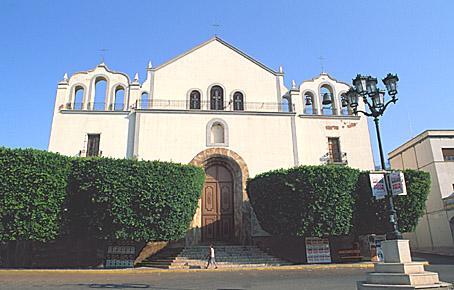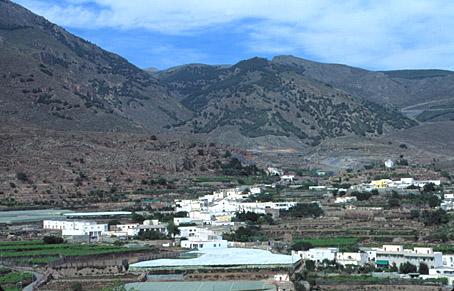Dalías

Town situated to the south of the Sierra de Gador. To the north, the mountains which are being reafforested have some places of interest. To the south and on the low lands, the landscape is ever more dominated by the plastic sheeting of the greenhouses.
The town preserves the traces of its Moslem origin in its structure; houses with orchards, narrow blind streets, an irregular design. Currently, the economic standard is reflected in the population and the buildings, of which the Parish Church, the Town Hall and the Casino are worthy of mention.
History
Its name comes from the Arabic word Dalaya, which means "vineyard". Up until 1982 its area reached the coast but the intensive greenhouse farming made the population move to the so-called Country area of Dalias and also provoked an unprecedented increase of population in this area, around El Ejido. In 1981, whilst Dalias only had 3,500 inhabitants, on the coast the concentration was of 33,000 inhabitants. This provoked the splitting of the municipal area.
The origins of Dalias date from the Al-Andalus period. The current village corresponds to the old Moslem village of Ambrox, although other information speaks of the fact that the primitive village was situated two kilometres away from the present position, in El Campo, where there are remains of sepulchres, aqueducts, houses and streets.
Before the War of the Alpujarras (1568-1570) it had 600 houses, 7 bakery ovens, 7 oil mills and 20 flour mills. After the war the Moors were expelled and this territory was left almost deserted. The repopulation was carried out in 1573 with 83 people.
In the year 1753, it formed a mayorship together with the villages of Adra and Berja, obtaining its definitive independence in 1920.
During the first third of the XIX century, Dalias underwent spectacular demographic growth due to the beginning of the working of the mines. The introduction of the production of the Ohanes grape coincided with the mining crisis of the end of the century, so one thing compensated the other.
At the beginning of the XX century the population remained stable. The subsequent crises brought about a fall in the numbers. At the end of the last century, El Ejido had 48 inhabitants.
Nowadays, the nucleus of the population is in Dalias and Celin. Its physical structure maintains its Moslem origins; houses with orchards, narrow streets and an irregular design. This village also remembers its mining past and foresees its future in intensive greenhouse farming. It looks towards the Sierra de Gador which is recovering its mass of forest, in other times made up of holm oaks, elms and poplars among others.
Eminent citizens
Padre Rubio, devout man.

- Max 12
- Min 10
- Max 53
- Min 50
- °C
- °F







